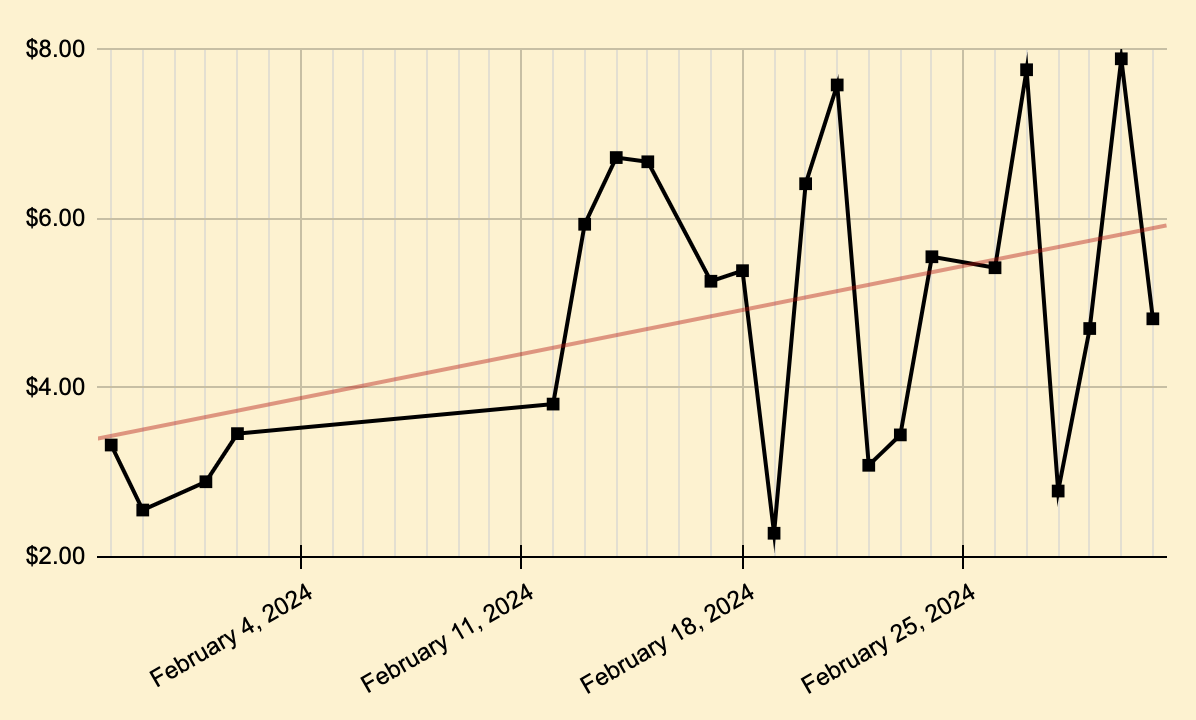|
Today's Opinions, Tomorrow's Reality
The Medialuna Index By David G. Young Buenos Aires, March 5, 2024 -- The Argentine Peso has stabilized against the dollar yet consumer prices continue to soar. Taming this inflation will be a key test of the new regime. When Argentina devalued the peso by 50 percent last December, it was not the new president who made the announcement. Instead it was Economy Minister Luis Caputo, a technocratic veteran of the 2015 to 2019 administration of business-oriented president Mauricio Macri.1 Both Caputo and President Javier Milei received praise from U.S. Treasury Secretary Janet Yellen last week after Caputo met her at an economic conference in Sao Paulo.2 Caputo's presence in the new administration has brought much needed international respect to a government led by a flamboyant TV personality. The December evaluation greatly narrowed the gap between the official rate -- used by exporters and financial institutions, and the technically illegal market rate traded on the street. The market rate is locally called the "Blue Dollar" instead of a "black market" rate, as police and government officials make no effort to combat it. Indeed, on Florida Street in Buenos Aires, it is common to see hawkers shouting "cambio" at passers-by while standing right next to policemen. But an amazing thing has happened since the devaluation -- in the past six weeks, the Argentine Peso has actually strengthened 20 percent against the US Dollar. It was trading at 1255 pesos to the dollar at the end of January, but now stands at 1010 to the dollar.3 This is the first month-long appreciation in the peso in many years. But while currency traders are bullish on the Argentine Peso, that hasn't stopped rampant inflation, which remained stubbornly high at 20 percent month on month in January.4 Economic theory says that inflation should go down after the government slashed spending leading to the first budget surplus in years5 and just as importantly, blocked the central bank from printing more money.
But even with these moves, inflation can be a stubborn thing. Argentines, both consumers and shopkeepers, have become habitualized to rising prices after decades of high inflation. Consumers try to spend their cash as quickly as possible before it loses value. Businesses regularly raise prices to keep up. Supermarkets have paper price tags on shelves fresh out of the printer just hours or days earlier. Printed menus at restaurants don’t even have prices — customers must scan a QR code with their mobile phones to see an online menu updated regularly with higher numbers. To be sure, some of this inflation is leftover shock rippling through the economy from the December devaluation which caused import costs to rise suddenly. But compared with normal developed countries, Argentina is relatively insulated from rising import prices because it makes so many products domestically — a consequence of decades of protectionist and import substitution economic policies. For nearly everyone on earth, globalization has been a driving force for the last 40 years, remaking the economy. That never really happened in Argentina. Yet inflation is still high, and now that the exchange rate against the dollar has stabilized, inflation is now high even in dollar terms. While February numbers are not available, prices denominated in dollars are clearly rising. The Economist magazine has long published a Big Mac Index, which compares buying power across economies by the local cost of a Big Mac in dollars. While McDonalds and Big Macs are common in Argentina, they are not nearly as common as the ubiquitous breakfast combo of two medialunas (a small sugar-glazed croissant) and a cup of coffee. Using the author's regular purchases of two such breakfasts most days in February, it is possible to construct a non-scientific "Medialuna Index" for the month of February. This index uses a separate government-sponsored MEP exchange rate for foreign credit cards, slightly lower than the Blue Dollar rate. These data show that the price of a medialuna breakfast has nearly doubled in dollar terms over the course of February, suggesting a month-on-month inflation rate of close to 100 percent. This is much higher than the 20 percent official figures for January. This high price increase may be driven by the coffee portion of the breakfast, as most coffee in Argentina is imported from Colombia and Brazil. This is an example of delayed inflationary effects of the December devaluation -- coffee beans keep well for months, but as stores run out, they must be replaced with new imports purchased at the devalued exchange rate. Whether or not Milei achieves his dream of dollarizing the economy, it will mean little if prices continue to rise in dollar terms. Stopping inflation means not only weathering delayed inflationary effects, but convincing businesses and consumers to stop expecting prices to always go up, such that they continue on sheer momentum. Recent changes show that while currency traders are believe in the peso, Argentine consumers and businesses remain unconvinced. Changing expectations, and stopping inflation, is easier said than done. Notes: 1. Reuters, Argentina's Caputo Announces Peso Devalution to 800 Per Dollar, Spending Cuts, December 12, 2023 2. Buenos Aires Times, US Treasry Boss Yellen, IMF Chief Georgieva Praise Argentina's Caputo, Milei, February 29, 2024 3. BlueDollar.net, US Dollar / Argentina Peso : Informal Rate Historical Chart, March 5, 2024 4. Buenos Aires Herald, Argentina Starts 2024 With a 20.6% Monthly Inflation Rate, February 14, 2024 5. Barron's, Argentine Sees First Monthly Budget Surplus in 12 Years, February 17, 2024 |


